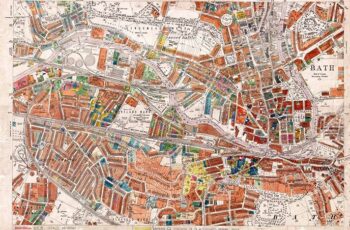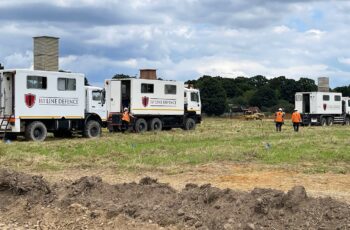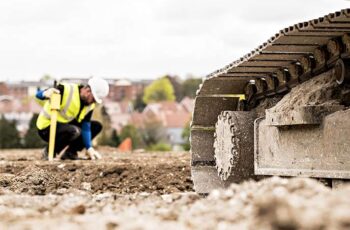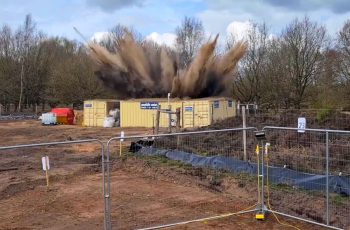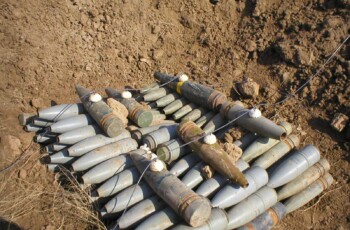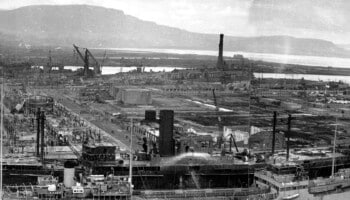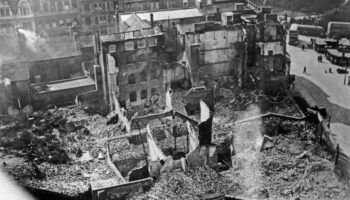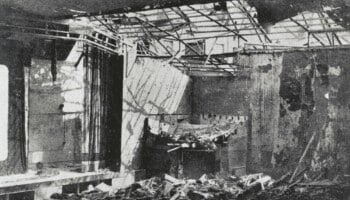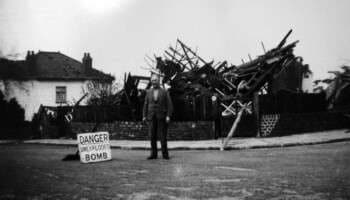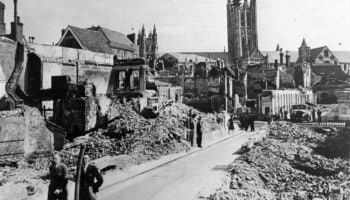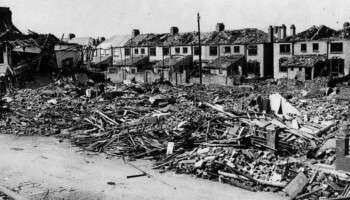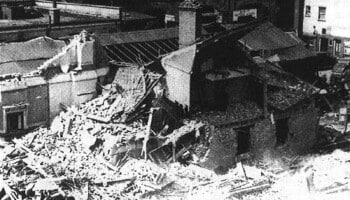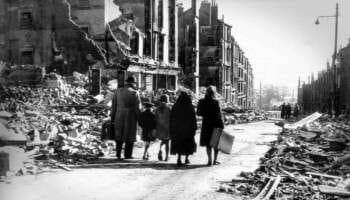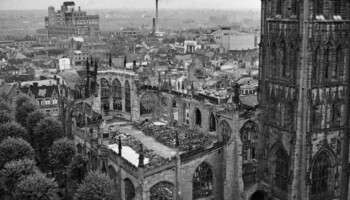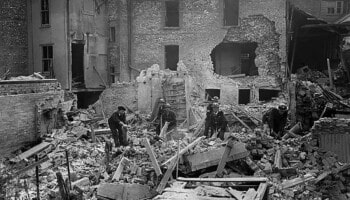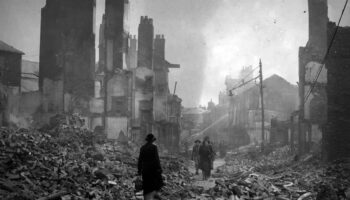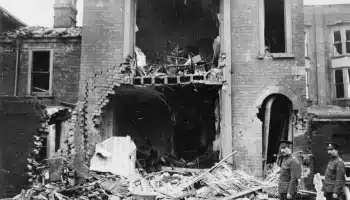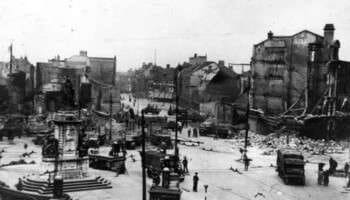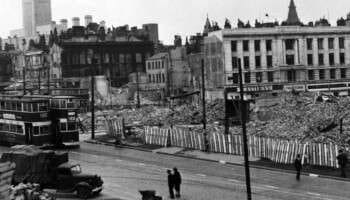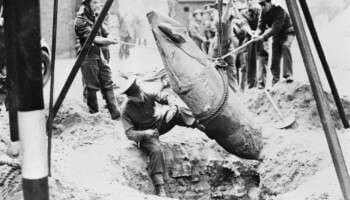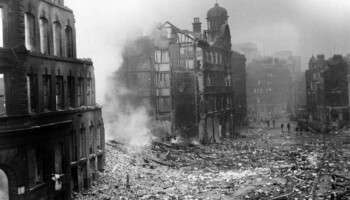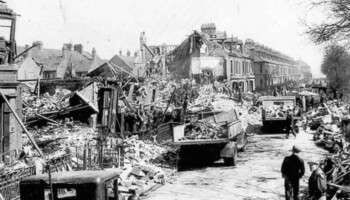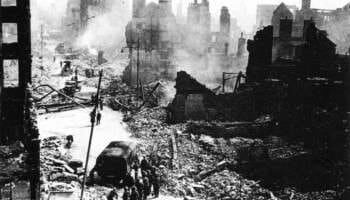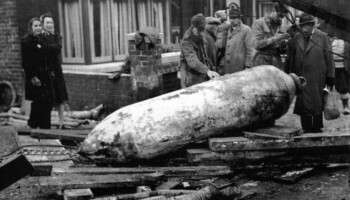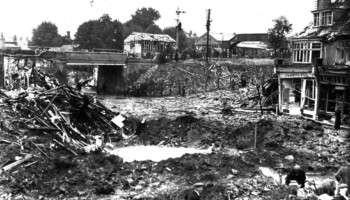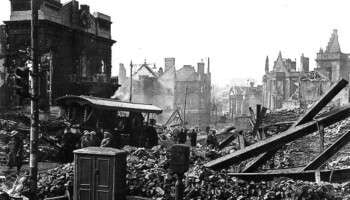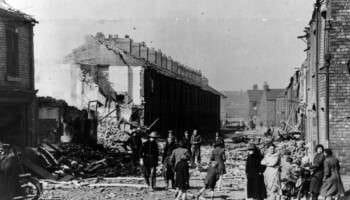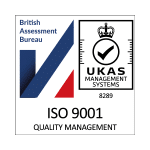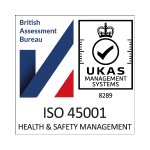Home » Resources » UXO City Guides »
UXO City Guide
Home Office Bombing Statistics for Sheffield
Record of German Ordnance dropped on the County Borough of Sheffield
High Explosive Bombs (All types)
1,121
Parachute Mines
25
Oil Bombs
0
Phosphorus Bombs
0
Fire Pots
0
Pilotless Aircraft (V-1)
0
Long-range Rocket Bombs (V-2)
0
Weapons Total
1,146
Area Acreage
39,586
Number of items per 1,000 acres
28.9
Why was Sheffield targeted and bombed in WWII?
The outbreak of WWII placed Sheffield as a valuable target for the Luftwaffe as a military industrial hub of northern England. Sheffield’s industrial works were primarily centred on Steel and Armaments, which was immensely important to the UK’s war effort.
The Hadfield Steel works was, at the outbreak of the war, the only place within the UK capable of producing 18-inch armour piercing shells1. The city’s English Steel Corporation Vickers churned out Rolls Royce Merlin engines used to power Spitfire aircraft, and throughout the war – Sheffield’s steel works produced 872 Matilda Tanks, 515 Churchill tanks and over 116,000 tank components2.
Home Office Bombing Statistics for Sheffield
Home Office bombing statistics indicate that 1,146 items of ordnance were recorded to have been dropped on the County Borough of Sheffield over the course of the war. This included an estimated 1,121 High explosives bombs and 25 parachute mines, resulting in a bomb density of almost 28.9 items of ordnance per 1,000 acres.
Major bombing raids in Sheffield
Following a Royal Air Force (RAF) raid on Berlin on 25th August 1940, Hitler personally influenced a change in Luftwaffe bombing tactics. The Luftwaffe moved away from bombing RAF Stations, Military Camps and Naval Bases, and instead sought reprisal with the indiscriminate bombing of civilian areas to affect the UK’s morale.
Sheffield was bombed in 16 separate raids, the most significant of these was on the nights of 12th / 13th and 15th / 16th December 1940, which together were codenamed Operation Crucible.
At 7pm on the 12th December, the air sirens began and across 9 hours – approximately 300 German bombers raided the city and an estimated 350 tons of high explosive bombs were dropped on the city.
While key factories and railway lines were identified as key target areas, in fact – the city centre and residential suburbs suffered the worst of the bombing3.
The Marples Hotel in Fitzalan Square received a direct hit and in total 70 civilians were killed, the District Gas Company sustained a massive explosion after one bomb pierced a holding tank and reportedly every building on Angel Street was either destroyed, damaged or burnt4.
Raging fires took hold of the city centre and shopping districts while high explosive bombs fell indiscriminately across the whole city, in industrial areas and residential suburbs.
Additionally, areas such as the Moor, King Street, Broomhill and Neepsend were also left devastated by the bombing raids5.
The Luftwaffe bombers returned on 15th December, once again targeting Sheffield’s industrial north-east with incendiary bombs and flairs. Many heavy steel factories, such as Hadfield’s, Brown and Baileys sustained direct hits, but none were severe enough to significantly hamper production6.
Throughout this raid, the Attercliffe area suffered the worst of the bombing and subsequent fires and damage. Throughout these raids, it is reported almost 700 civilians were killed, approximately 82,000 houses out of 150,000 were damaged and numerous landmarks were badly damaged or destroyed. While Sheffield was bombed on many more occasions, none would prove as destructive as the raids in December 19407.
Does UXO still pose a risk to construction projects in Sheffield?
The primary potential risk from UXO in Sheffield is from items of German air-delivered ordnance which failed to function as designed. Approximately 10% of munitions deployed during WWII failed to detonate, and whilst efforts were made during, and after the war to locate and make UXBs safe, not all items were discovered. This is evidenced by the regular, on-going discoveries of UXO during construction-related intrusive ground works across the UK – not just in Sheffield.
Occasionally items of British explosive ordnance are also encountered – often associated with WWII defensive measures or Home Guard operations. However, some areas of the city may entail a greater level of risk, given the extent of munitions development and storage within the city and its factories.
I am about to start a project in Sheffield, what should I do?
Developers and ground workers should consider this potential before intrusive works are planned, through either a Preliminary UXO Risk Assessment or Detailed UXO Risk Assessment. This is the first stage in our UXO risk mitigation strategy and should be undertaken as early in a project lifecycle as possible in accordance with CIRIA C681 guidelines.
It is important that where a viable risk is identified, it is effectively and appropriately mitigated to reduce the risk to as low as reasonably practicable (ALARP). However, it is equally important that UXO risk mitigation measures are not implemented when they are not needed.
While there is certainly potential to encounter UXO during construction projects in Sheffield, it does not mean that UXO will pose a risk to all projects. Just because a site is located in Sheffield does not mean there is automatically a ‘high’ risk of encountering UXO. It really does depend on the specific location of the site being developed.
A well-researched UXO Risk Assessment will take into account location specific factors – was the actual site footprint affected by bombing, what damage was sustained, what was the site used for, how much would it have been accessed, what were the ground conditions present etc.
It should also consider what has happened post-war – how much development has occurred, to what depths have excavations taken place and so on. This will allow an assessment of the likelihood that UXO could have fallen on site, gone unnoticed and potentially still remain in situ.
Sources
1A. Neil, Sheffield’s Date With Hitler, AMC Retro Ltd, 2010
2A. Neil, Forgotten Memories from a Forgotten Blitz: Sheffield under Nazi attack – by the people who lived there, AMC Retro Ltd, 2012
3A. Neil, Sheffield’s Date With Hitler, AMC Retro Ltd, 2010
4A. Neil, Forgotten Memories from a Forgotten Blitz: Sheffield under Nazi attack – by the people who lived there, AMC Retro Ltd, 2012
5https://www.sheffield.gov.uk/libraries-archives/access-archives-local-studies-library/research-guides/blitz
6A. Neil, Forgotten Memories from a Forgotten Blitz: Sheffield under Nazi attack – by the people who lived there, AMC Retro Ltd, 2012
7https://www.thestar.co.uk/retro/why-sheffield-remains-high-risk-for-unexploded-wwii-bombs-and-where-theyre-most-likely-to-be-485202
Recent UXO discoveries in Sheffield
Since the war, many items of UXO have been discovered across multiple cities within the UK, with Sheffield no exception. See the news articles below about UXO incidents and discoveries from national and local press in Sheffield.
1st Line Defence keep up-to-date with relevant and noteworthy UXO-related news stories reported across the UK, and you can browse through these articles using the buttons below.
Get UXO risk mitigation services from a partner you can trust
UXO City Guides
Got a project in Sheffield? Not sure if there's a UXO risk? Need advice but not sure where to start?
If you need general advice about UXO risk mitigation in Sheffield, contact us and we’ll be happy to help.
Call: +44 (0) 1992 245020 or Email: info@1stlinedefence.co.uk
Contact Us
* indicates required fields
